
发布时间:2022-03-31
导语:
在本篇文章中,我们将会为您介绍近期雷梭勒瑞士办公室所组织的一项团建活动,通过雷梭勒同事的第一视角,带领大家一起感受纳沙泰尔的历史人文气息。
3月11日,雷梭勒瑞士办公室组织了一场团建活动。此次团建不仅是为了让大家放松身心,也是为了加强员工之间的沟通与协作,借此机会让大家更好地了解纳沙泰尔地区的历史人文风貌。
当天,瑞士纳沙泰尔办公室的所有员工驱车来到拉绍德封市的一个名为Le Maillard的农场(距纳沙泰尔市仅15分钟车程),享用了一顿传统的瑞士午餐。
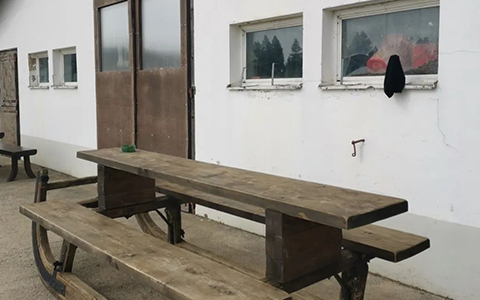
一进农场,我们就受到了这里小动物们的欢迎,胖乎乎的猫咪、小鸡和马儿们似乎都对我们这些新来的客人感到好奇。农场的外观非常漂亮,房屋、包括室内的桌椅都是木头制作而成。
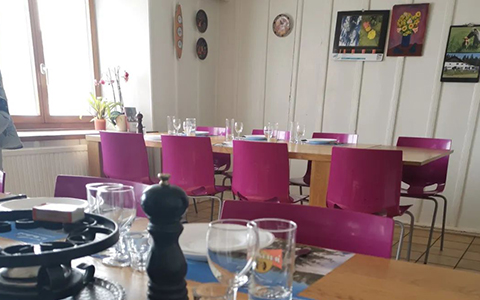
农场主人一家热情地接待了我们,进屋之前,每个人都品尝了一杯主人自制的热葡萄酒。
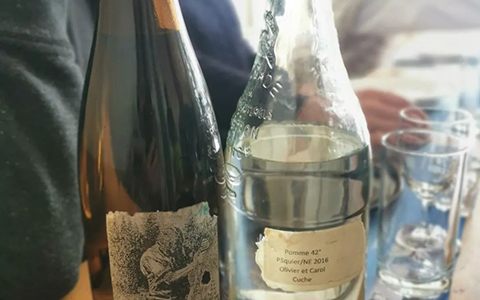
之后,他们又带我们参观了厨房,向我们展示了如何制作这些美味的食物,在我们到来之前还在桌上贴心地准备了免费的酒水供我们品尝!午餐期间,他们还不时地过来询问食物是否可口,是否还有什么需要帮助的地方。他们的亲切让我们感到宾至如归,这是在其他任何地方都很难体验到的享受和服务。
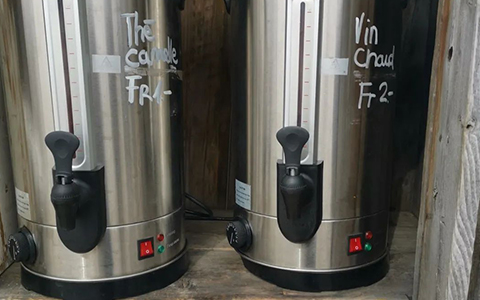
午餐我们吃了传统的瑞士奶酪火锅和牛肉板烧。奶酪火锅是瑞士的传统菜肴,需要将溶化的奶酪放进炉子上的锅里,用蜡烛进行加热,食用时,只需用长柄的叉子取一块面包,蘸上奶酪即可。我们吃的奶酪火锅带有浓郁的白葡萄酒香味,搭配面包尤为美味。

牛肉板烧也是餐桌上最受欢迎的菜肴之一,大块的牛肉在火热的石板上滋滋作响,浓郁的香气伴随响声不断刺激着你的味蕾,带来了味觉、视觉与嗅觉的多重享受,每一口吃下去都让人感到异常满足。
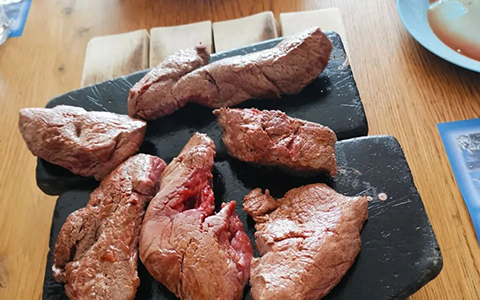
此外,我们还品尝到了Röstis,一种煎土豆饼,最初它是瑞士德语区的经典农家早餐,而后逐渐发展成了瑞士的国菜之一。农场主人告诉我们,煎土豆饼有一个非常重要的诀窍:在煎第一面时我们要盖上锅盖,待它煎至酥脆,再小心地翻到另一面,此时无需再盖锅盖,待这一面也煎至金黄即可出锅。只有这样,我们吃到的Röstis才是外酥里嫩,口感丰富。
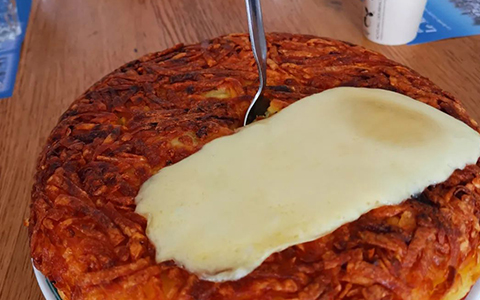
之后,他们又为我们端上了自制的焦糖咖啡和甜点,也都非常美味。农场主人告诉我们,他们用的牛奶是从其他农民那里购买来的,既新鲜又全天然。他们自制的焦糖香味浓郁,与咖啡搭配品尝,口感极佳。我们的一位瑞士同事在品尝了一块后,赞不绝口道:“我已经很久没有尝过这么好吃的焦糖方糖了!”
午餐后,大家自然而然地聊起了天,谈到中、瑞两国的国歌时,我们突然发现,虽然都是国歌,但它们的演唱风格却完全不同。兴之所至,我们就在餐厅里唱起了国歌,在悠扬的歌声中,隔壁桌的食客也情不自禁地鼓起掌来。直到离开之时,每个人都还依依不舍,这是一段如此美妙的经历,令人久久难以忘怀。
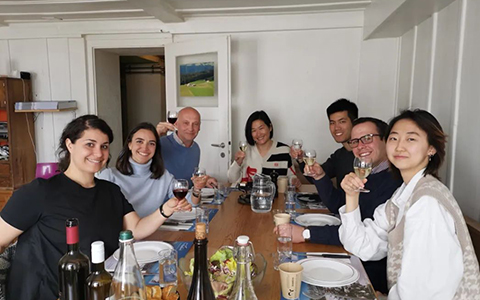
这顿特别的午餐,让我们的同事在这个温暖的午后变得更加亲密。而我们也在经过了一段时间的辛苦工作后,借此机会放松了身心,养足了精神,并将以更好的状态面对今后的工作。
纳沙泰尔“美好年代”导览游("Belle- Époque" Guide Tour of Neuchâtel)
所谓“美好年代”(Belle Époque)指的是从普法战争(1870-71年)结束至第一次世界大战(1914年)开始前,欧洲历史上和平安定的四十年。在此期间,第二次工业革命兴起,极大推动了社会的发展,由于医疗卫生水平的进步,人均预期寿命得以延长,与此同时,瑞士的经济文化水平也有了显著提升。
离开农场后,我们乘车返回纳沙泰尔,参加了“美好年代”导览游活动。在“普瑞广场”(Place Pury)的主广场上,我们见到了纳沙泰尔市的私人导游专家,她为我们介绍了本市的资助者大卫·德·普瑞 (David de Pury),他是瑞士贸易大使和外交官。他把自己大部分的财富都捐献给了这座城市,用于修建学校、医院和政府大楼,纳沙泰尔市因此获得了前所未有的发展。
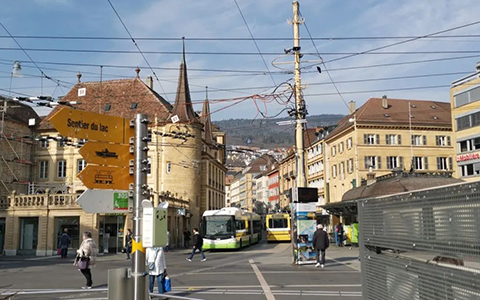
1855年,普瑞广场中心竖起了大卫·德·普瑞的雕像,以纪念他对这座城市的巨大贡献。不过,人们对大卫的财富来源颇有争议,因为他曾经在一家从事奴隶贸易的公司拥有股份。为了让人们更清楚地了解这段历史,纳沙泰尔市支持并呼吁对公共空间的历史性研究与纪念性反思,宣扬人类尊严与平等。

导游告诉我们,一条名为“塞翁”(Seyon)的河流经通往普瑞广场的主要街道。到1843年之前,我们所看到的街道都还是一条河流,从汝拉山脉流向纳沙泰尔湖。尽管大多数情况下塞翁河都非常平静,但是一旦突降暴雨,河水就会迅速暴涨,引发洪灾。由于河水经常泛滥,早在1756年,纳沙泰尔居民就曾设想将这条河从市中心分流,以防再次出现类似1579年的洪灾事件。然而由于资金匮乏,直到1843年,这个项目才得以竣工。今天的塞翁河流经城市下方的一条隧道,最后流入市中心以西的埃沃勒( Évole )湾。
之后,我们上了普瑞广场上一辆名为Tramoscope的原始电车,电车上播放着动画视频与音频,瞬间就将游客带回了20世纪初“美好年代”的纳沙泰尔。我们在电车屏幕上看着那个时代的人们从早到晚的生活,犹如经历了一次奇妙的时光之旅。
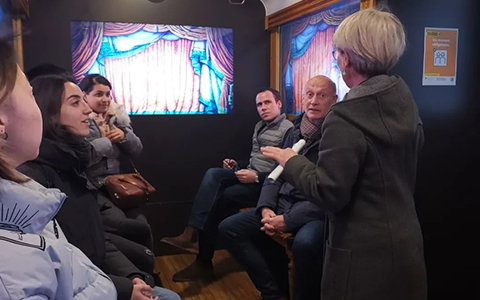
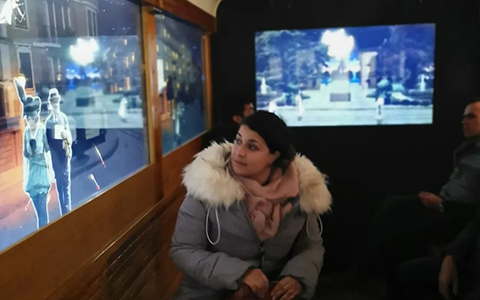
结束这场时间旅行后,我们开始步行前往湖畔长廊。沿着湖边漫步,我们在雷梭勒纳沙泰尔办公室入口附近看到了两座青铜雕像。这两座雕像生动展现了“美好年代”时期男女着装风格:女士们习惯身穿宽松的连衣裙,头戴一顶大礼帽;男士们的潮流则是正式的西装三件套。在这一时期,中产阶级开始购买小件奢侈品,热衷旅行,以此彰显自己品味良好、与众不同。
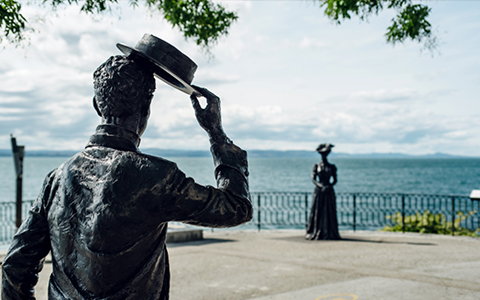
在雕像的旁边,有一座延伸到湖边的桥,人称“乌托邦人行桥”。该桥建于1991年,本是建国700周年庆典临时展览的一部分,但是由于颇有魅力,以至于在庆典结束后仍被保留了下来,现已成为纳沙泰尔市标志性场所之一。
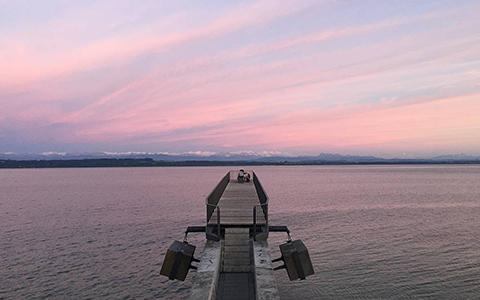
接着,我们又沿着湖岸向港口走去,途中,我们捡到了一块黄色和一块白色的小石头。这两种石头都是瑞士传统建筑材料,白色石头多用于地基工程,黄色石头则用于建筑的其他部分,握在手里可以明显感受到,白色石头要重得多。
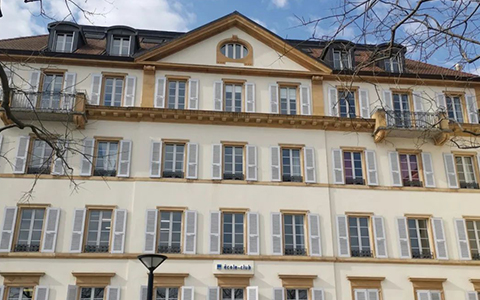
最为典型的这类建筑就是“邮政酒店”(Hotel des Postes),耗时三年建成,于1896年4月1日正式启用。该建筑曾是万国邮政联盟的所在地,这是有史以来的第一个国际联盟,由纳沙泰尔的一位前联邦议员创立。在它的屋檐下,刻着31个成员国的名字,包括波斯(今天的伊朗)——一个在1935年之前曾经存在的国家!如今,这座建筑已是纳沙泰尔市邮政局和旅游局的所在地。
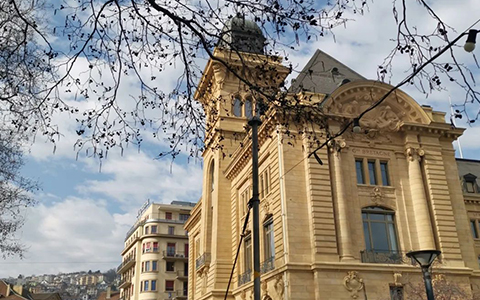
Original English Text
Team Building Event – Neuchâtel Office
On March 11, 2022, La Soleille Family Office organized a Team Building event. Jinling Sun, the CEO of La Soleille Family Office, stated the purpose of this team building, is not only to let everyone relax but also to strengthen the communication and collaboration between employees and to take the opportunity to get to know the region of Neuchâtel better. All employees in Switzerland, the Neuchâtel office, had a traditional Swiss lunch at a farm called Le Maillard in La Chaux-de-fonds, a Swiss city in the canton of Neuchâtel, and it is a 15-minute drive from the city of Neuchâtel.
We drove up to the farm in the mountain and were welcomed by a chubby cat, chickens, and horses of the farm. The exterior of the farm is very beautiful and the house, including the interior tables and chairs, is made of wood. Almost everyone tasted the farm's homemade mulled wine before going inside, and we were greeted very warmly by the family who owns the farm. The owners of the farm were very gracious, they gave us a tour of the kitchen, showed us how the delicious food was made, and kindly prepared free liquors on the table before we arrived for us to taste! And during lunch, they often came over to ask if the food was good and if there was anything else they could do to help. They give us a sense of home, an experience and service that we can't experience anywhere else.
We enjoyed a traditional Swiss cheese fondue and meat on the slate. Fondue is a traditional Swiss melted cheese dish served in a pot over a stove and heated with a candle and eaten by dipping bread into the cheese using long-stemmed forks. The cheese fondue we had has a strong aroma of white wine and is very tasty with the bread. The beef was very large pieces, on the slate emitting a burst of bared sound, each bite to eat was very satisfied. Then we had röstis, a type of fried potato pancake, originally a typical farmhouse breakfast in German-speaking regions of Switzerland is now one of the national dishes of Switzerland. The owner of the farm told us the first side was covered with a lid until crispy, then carefully turned and cooked the second side without the lid to golden perfection. So the röstis we had was crispy on the outside and very soft on the inside, and it was very richly layered to eat. Their homemade caramel coffee had a caramel aroma and the farmer came over to explain that the milk they use is all-natural, fresh, and purchased from other farmers. Their desserts were also very delicious, they had homemade caramel sugar cubes, which can be eaten together with coffee and their flavors blend very well. Our Swiss colleague was surprised after tasting a piece and said, “I haven't had such delicious caramel sugar cubes for a long time!"
After lunch, we all chatted together and found that although they were both national anthems, the Swiss and Chinese national anthems were sung in completely different styles. So we sang the song in the restaurant together and the diners at the next table applauded after they heard it. When it was time to leave, each of us felt a little sad that we had such a wonderful experience here. Our staff members were also getting closer to each other than they were before having this lunch. After a period of hard work, we all took this opportunity to relax and refresh ourselves to be in better shape to face the work ahead.
“Belle- Époque” Guide Tour of Neuchâtel
The Belle Époque took place after the French-German War of 1870/71, during which Europe enjoyed a period of internal peace for over forty years until the start of World War I in 1914. The Second Industrial Revolution was its main driving force, as advanced in medicine and health, increased life expectancy, and a significant rise in the country's economy and culture.
Afterward, the team returned to Neuchâtel to have a “Belle- Époque” guide tour and learn about its history. We met our private tour guide expert of the city of Neuchâtel on the main square called “Place Pury”, thanks to the city benefactor David de Pury who was a Swiss trade ambassador and diplomat. A statue of David de Pury was erected in the center of Place Pury in 1855 to commemorate his contribution to the city, to which he donated most of his wealth to construct schools, hospitals, and government buildings, which has allowed Neuchâtel to experience unprecedented urban development. However, the origin of his wealth is controversial, as he once owned shares in a company active in the slave trade. In order to shed light on this history, the City of Neuchâtel supports the dissemination of historical research and commemorative reflections in public spaces to affirm the equal dignity of human beings.
Flowing through the main street leading up to Place Pury is a little river called the “Seyon”. Until 1843, the street we can see used to be a river flowing from the Jura mountains to the lake. Although the Seyon is most often a peaceful river, it was subject to rapid and devastating floods in case of heavy rainfall. Victims of its regular overflows, sometimes dramatic as in 1579, the people of Neuchâtel envisaged as early as 1756 to divert the river from the city centre. Due to a lack of funds, this project was not realized until 1843. The Seyon today flows through a tunnel under the city before flowing into the Bay of Évole, west of downtown.
Entering an original tram called the Tramoscope on Place Pury, it shows a visual and auditory animation that takes visitors back to old Neuchâtel during the Belle Époque at the beginning of the 20th century. We experienced a trip back in time and saw how people lived their day from morning to night in that period on the screens in the tram.
After the time travel in this tram, we started the walking tour direction to the lake promenade. Along the lake we met two bronze statues very close to the entrance of La Soleille Family Office, depicting women’s and men’s styles of dress during the period of the Belle Époque. Ladies used to wear a voluminous dress with a large hat, whereas the gentlemen’s trend was a formal three-piece suit. The Belle Époque was also the time when upper and middle-class people started to buy small luxuries and travel, showed their good taste, and thus distinguished themselves. Next to the statue, there is a bridge extending to the lake, which is called the Utopia footbridge and it was built in 1991 as part of a temporary exhibition for the festivities of the 700th anniversary of the Confederation. However, the footbridge was too appealing that it was kept after the festival and is now a part of the city's emblematic places.
Next, we walked along the lakeshore to the harbor, feeling the difference between two small pieces of yellow and white stones in our hands. The white stones, which are used as the base of the traditional Neuchâtel buildings are much heavier than the yellow stones which are used for the rest of the building. In the image below we can see the “Hotel des Postes”. It was built within three years and inaugurated on April 1, 1896. The building once housed the Universal Postal Union, the first-ever international union created, which was founded by a former federal councilor from Neuchâtel. The names of the 31 member countries are inscribed under its cornice, including Persia (today’s Iran), a state that no longer exists today since 1935! Today, the building houses the city's postal office as well as the tourist office.
本文转载自雷梭勒家族办公室,如有侵权,敬请告知删除。
Sooswiss为您提供
瑞士方向私人管家式的定制服务:
1)家族传承 2)财富管理 3)瑞士投资
4)居留计划 5)税务优化 6)家族治理
更多资讯请登录网站 www.sooswiss.com
